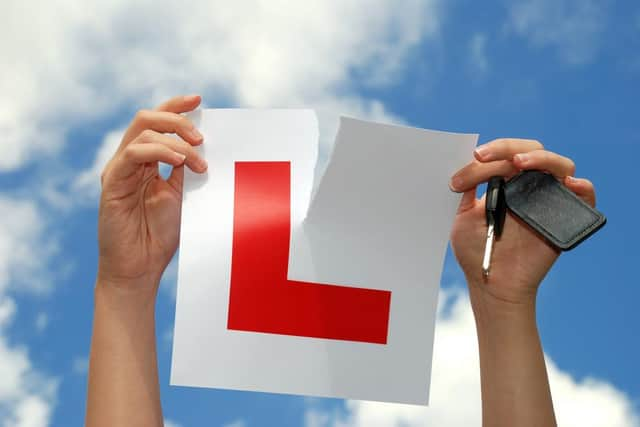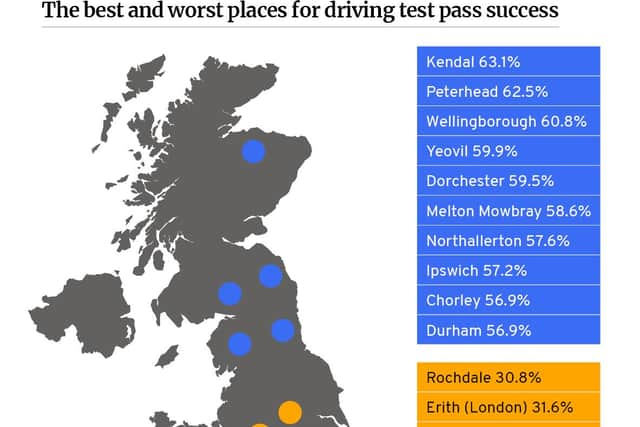Want the best chance of passing your driving test? Head to the country
and live on Freeview channel 276
New data has revealed that driving test pass rates in some parts of Britain are twice as high as in others.
Official test figures show that in some areas almost two thirds (63 per cent) of learners pass their practical test while in the worst performing areas a mere 31 per cent manage to gain their licence.
Advertisement
Hide AdAdvertisement
Hide AdThe data for 2020, when driving tests were significantly disrupted, shows an average pass rate of 46 per cent but big differences between major test centres - those where at least 1,000 candidates sat their test.


The driving test is the same wherever you sit it but the latest data, obtained by insurer Tempcover, suggests that geography plays a significant role in success, with pass rates far higher in rural areas that in urban centres.
It is thought that the lower pass rates in cities could be, at least in part, down to drivers having to deal with heavier traffic and more complex road systems, including one-way systems and complicated junctions.
Rochdale had the worst pass rate of any test centre, with just 31 per cent of its 6,969 candidates making the grade. Erith in London and Birmingham’s South Yardley both recorded pass rates of 32 per cent, just ahead of Speke in Liverpool (33 per cent) and Kingstanding in Birmingham (34 per cent).


Advertisement
Hide AdAdvertisement
Hide AdAll 10 of the centres with the lowest pass rates were in large cities while test centres in smaller urban centres and rural areas dominated the opposite end of the table.
Drivers sitting their test in Kendall were most likely to pass, with a success rate of 63.1 per cent. Peterhead test centre in Aberdeenshire recorded the second highest pass rate, 62.5 per cent, ahead of Wellingborough (60.8 per cent), Yeovil (59.9 per cent) and Dorchester (59.5 per cent).
The research by Tempcover also looked at gender and age gaps when it came to pass rates, revealing that men were more likely to pass their test than women - 50 per cent compared with 43 per cent - and pass rates decline as candidates get older.
The youngest learners were found to be the most likely to succeed, with a pass rate of of 58 per cent - well above the national average. From there, standards begin to slip, with three-quarters of all candidates over the age of 50 failing the test.
Advertisement
Hide AdAdvertisement
Hide AdTempcover CEO Alan Inskip says “Our research clearly shows where and when you take your test plays a big part in passing and failing, with rural regions faring considerably better than their urban counterparts. But learners shouldn’t be put off just because of their location, as choosing the right day and time can improve your chances of passing wherever you take your test. While these statistics offer useful insights, the most important aspect of passing your practical is to thoroughly prepare.”
Peter Brabin, Head of Training at Bill Plant Driving School, said that while a fail was disappointing for the learners concerned, it should reassure other road users.
He commented: “It’s never good to be told you have failed your driving test, but when you consider that the average pass rate was 45.9 per cent between April 2019 and March 2020, it should also give some confidence that people aren’t just being passed for the sake of it to clear the backlog and that people really are expected to be both calm and confident behind the wheel. Safety must be the upmost priority - it always has been and always will be.”
Comment Guidelines
National World encourages reader discussion on our stories. User feedback, insights and back-and-forth exchanges add a rich layer of context to reporting. Please review our Community Guidelines before commenting.
